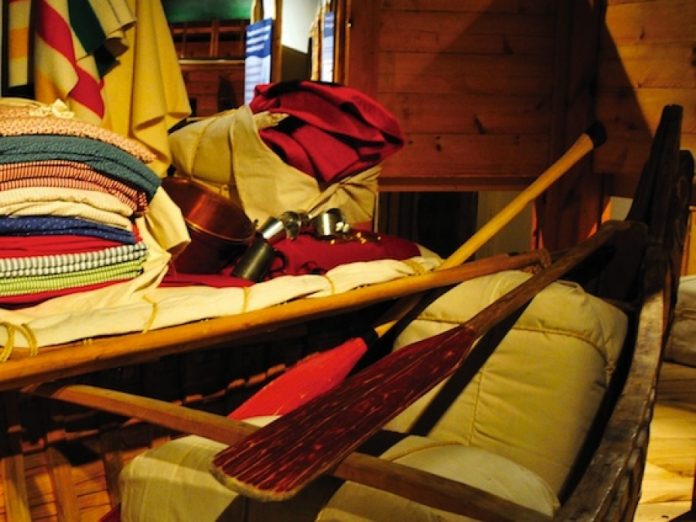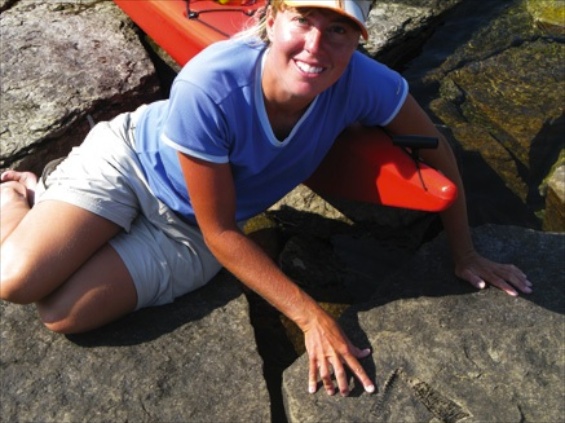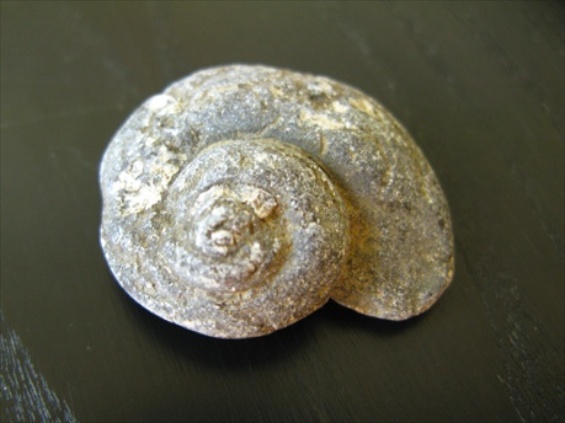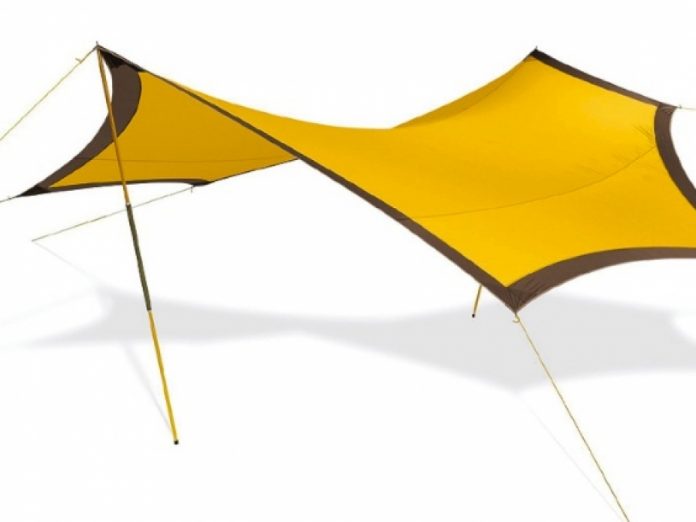This feature article originally appeared in Canoeroots and Family Camping magazine.
“We like to do a bit of a test whenever we bring guests out here,” said Jeremy Ward, Curator for the Canadian Canoe Museum and one of our three hosts for the day. “We get a pretty good idea of how much fun we’ll have judging by how wide-eyed you are when you first walk through the door.”
He was only half joking. Apparently some of the people they take through the museum’s archives don’t even bat an eye as they cross the threshold. They go right on talking as if they have just strolled into a Walmart, and walk out barely noticing the significance of the collection.
Wondering how one could be anything less than floored I asked, “How’d we fare?”
“You guys looked pretty amazed.”
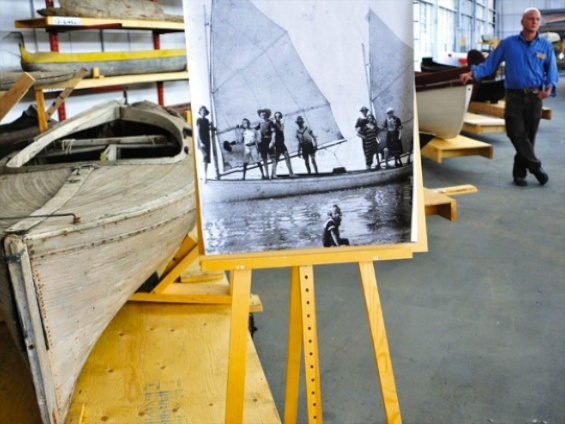
From the exterior, the 30,000-square- foot warehouse is nondescript. It used to serve as a factory for Outboard Marine, a motor manufacturer and part of Peterborough’s long boat building history. After the industry faltered in the ‘60s, the company eventually went under and the building and all the equipment inside were essentially left to collect dust.
“When we first moved in, all the boats were stored wrapped in plastic and sealed off to preserve them from exposure to the dust and decay of the rest of the building,” said John Summers, the museum’s General Manager. “It was quite a process to get it to where it is today.”
After the remaining forgotten factory equipment was removed, the local fire department came in and literally hosed the building’s interior down, floor to ceiling. A small army of volunteers made up mostly of university students on their summer holidays whitewashed the walls and resealed and painted the sprawling concrete floor.
Today, natural light washes in from the rooftop windows, bathing the hundreds of boats in soft sunlight. Ancient-looking dugouts line one outside wall on shelves rising up 20 feet. Racks loaded with some of the museum’s 500 curious paddles of all shapes, sizes, materials and ages sit near the warehouse’s entrance. Along another wall is a drop sheet, hung to create a makeshift photo studio for the cataloging of each piece in the collection. Twenty-foot wood-plank boats and fragile birchbark war canoes on dollies crowd aisles lined by rows of stands on wheels. Each stand holds nine canoes in various stages of repair and preservation, each canoe with its own manilla tag stating a name and item number.
Ward pointed out the Starkell’s Orellana of Paddle to the Amazon fame; then, a canoe carved by First Nations to commemorate the Hudson Bay Company’s 300th anniversary that required painstaking attention to detail in fabrication but had apparently never actually seen water.
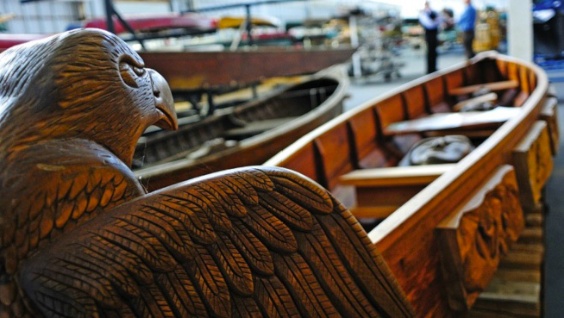
Ward shared the history of the gold medal-winning K1 from the 2004 Olympics in Athens; a miniature decked Fijian outrigger outfitted with a crab claw sail; and the Père Lallement—a 22-foot cedar canvas Chestnut canoe that capsized almost 35 years ago on a school trip in Timiskaming, resulting in the death of 12 boys and their master.
Each of the dozen-or-so canoes I recognized had such incredible stories behind them. And there were hundreds more boats with stories I could only guess at.
“In each story is a lesson of cooperation between people,” explained the museum’s Executive Director, James Raffan. “They’re all about people’s relationship to place, and about remembering.”
Like an inquisitive child, I jumped around from boat to boat, asking about their origins, the most peculiar looking ones really catching my attention. There is a definite international flavor in the materials, shapes, designs and techniques used to build many of the boats.
“What I find very exciting as we look at canoes from California or from Samoa, from Polynesia, Papua New Guinea, Solomon Islands or South America, is that only a certain portion of each canoe is functional,” explained Ward. “Of course it needs to perform, it needs to paddle, it needs to be maneuverable or strong-tracking, but so much of each boat is just the artistic, the cultural art form of the community it came from and it’s so distinct.”
“There are some strange looking watercraft in here,” he added, “but they all have a family resemblance. Each one has its own individual story but, as an aggregate, they all link together.”
He and his team use these links to create the imaginative exhibits in the museum’s main display area. “This is an idea factory,” Ward beamed.
Like his colleagues showing us around, he could happily go on all day, revealing details of workmanship, design and history. We would happily follow.
At the risk of sounding ignorant, I had to ask about the many racks holding dozens of what appeared to me to be run-of-the-mill cedar canvas canoes. Ward smiled, knowing what was coming before I could even get the question out. It’s clear he’s passionate about the eccentricities of every piece, but all three of our tour guides acknowledged that there is some replication in the artifacts.
“The collection is filled with the idiosyncrasies of its founder, Kirk Wipper,” said Summers. “Because it started as a private collection, it was really just his collection of boats. He didn’t necessarily have the same bigger-picture outlook that we need today to run the museum.”
In 1957, at a summer camp north of Minden, Ontario, a friend presented camp owner, Kirk Wipper, with a dugout canoe from the 1890s. Ten years later, his collection had grown to over 150 boats housed in log buildings and dubbed the Kanawa Museum.
As Summers suggested, Wipper’s collect- ing habits were very organic. Friends would keep him informed of interesting watercraft as they became available. He would scoop up a freighter or a cedarstrip as they would cross his path. He would take on debt to invest in truly unique artifacts.
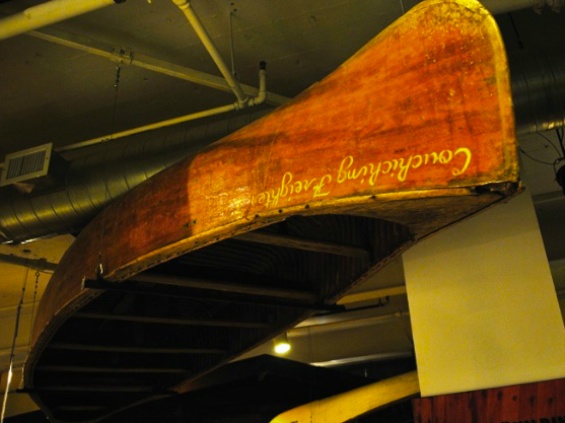
“The collection is filled with the idiosyncrasies of its founder, Kirk Wipper,” said Summers. “Because it started as a private collection, it was really just his collection of boats. He didn’t necessarily have the same bigger-picture outlook that we need today to run the museum.”
Through it all, he was guided by a feeling of responsibility to continue collecting in order to share the whole story of canoeing and kayaking, and their relationship to the environment and the history of North America.
His dedication was tireless. No Haida dugout canoe had been carved within living memory until Wipper commissioned one in 1968. He negotiated the $150,000 purchase of 44 canoes from New York’s Museum of the American Indian. He transported a 53-foot dugout canoe from British Columbia to Ontario on the roof of his pick-up truck.
By the ‘80s, the Kanawa Museum had outgrown its home. After hearing that Wipper was looking for a new home for his 600 boats, a group from Trent University set out to bring the collection to Peterborough, home of the famous Peterborough Canoe Company.
In 1989, a board of directors was formed and by 1994, after several summers spent transferring the collection, the artifacts were in the hands of the newly established Canadian Canoe Muesum. The doors to the current location opened to the public July 1, 1997.
As our hosts sealed up the archives and we made our way back to the museum’s main building—the one with all the exhibits—conversation turned to the present.
While this museum is truly one of a kind, its inception really isn’t that out of the ordinary. “A crazy collector is behind the founding of a lot of museums,” said Raffan, “look at the Smithsonian. What’s not so well known is the fact that this is a living, breathing organization.”
Raffan, Ward and Summers manage the collection with a clearer mandate as far as accepting artifacts goes, but they also continue to reflect Wipper’s goal of telling the entire canoeing story.
Over 100 boats are on display in the main exhibit area, along with hundreds more artifacts. In the warmth of muted museum lighting, visitors explore a salon dedicated to cedar Chestnut and Peterborough Canoe Company boats from the heyday of recreational canoeing in the early 20th century. Around the corner, behind glass, sits Pierre Trudeau’s iconic deerskin coat across from a screen playing Bill Mason films.
Upstairs, Hudson’s Bay blankets, casks and muskets are arranged in a birchbark canoe; plaques describe life as a voyageur during fur trade times. A group of middle school students sit in a circle on the floor nearby amidst skin-on-frame kayaks, learning about the primitive materials and craftsmanship from a volunteer. “The museum isn’t just about the past,” explained Summers. “It’s about what people do with their families today.”
“The canoes are physically old, but the things that make them what they are, are as fresh and new today as they were when the boats were first made,” he continued. “One of the things we like our visitors to come away with is how connected this all is.”
In contrast to the birchbark and cedar is a polyethylene Dagger freestyle boat hanging from the ceiling—a prototype from the days when whitewater paddlers were parking cars on the bows and sterns of their boats to flatten them out to improve performance in a hole.
In another corner, there is a fully operational workshop where Ward and a crew of volunteer artisans build and repair boats, paddles and other paddling paraphernalia while visitors watch, ask questions and even participate.
“It really is amazing that we’ve created all of this from next to nothing,” said Raffan, referring to the fact that the museum continues to run exclusively on funding from private sources and membership. “We truly are a world-class museum destination and there continues to be no funding from the federal government.”
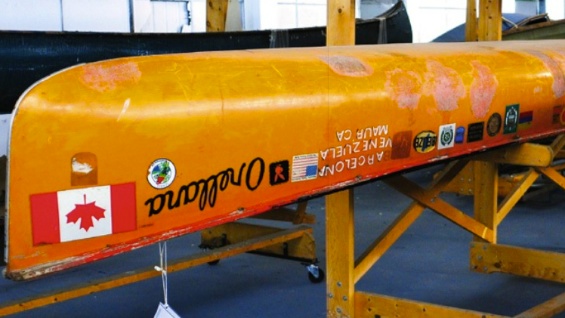
This has caused some instability over the years. In 2003, they were forced to close their doors due to financial problems. The following year, an anonymous donor stepped up and paid off two-thirds of the museum’s debt. Under this momentum, they were able to bolster membership and reopen the world’s largest collection of ca- noes and kayaks.
Financial hardship may seem like an economic reality inevitable in the world of special interest collections. But if you put the museum into context, it becomes clear that someone has dropped the ball when it comes to public funding.
The canoe is inextricably linked to North American history. The Canadian Canoe Museum chronicles the evolution of a civilization as much as it does boats and paddles. In 2007, the canoe was voted as one of the Seven Wonders of Canada as part of a reality TV series. In commemoration, the museum has established National Canoe Day, celebrated every year by thousands of people across Canada and around the world.
Today, the museum has a staff of nine, and a crew of 120 active volunteers who Raffan credits as being at the heart of a lot of the day-to-day operations. The artifacts, facility and events have been established as world-class without the help of any significant government backing. Working under this reality has forced Raffan, Summers and Ward to be creative.
“Take five zeros off the budget of a big museum,” said Raffan, “then take 10 per- cent of that and it would make a huge difference to what we do.”
Still, members get some wonderful perks beyond the usual gift shop discounts and unlimited admission. Among other benefits, Raffan recently announced a members-only online exhibit—a unique, exclusive web museum filled with content visitors to the bricks and mortar museum can’t access.
They are also optimistic looking into the future. Raffan and Summers share medium-term plans of moving the museum from its current location just off the highway, bookended by plazas and industrial parks, to Peterborough’s picturesque waterfront, giving them the opportunity to offer an on-water component to the museum in a purpose-built facility.
As we wrapped up our behind the scenes tour, we shook hands and promised to return soon. Exiting through the foyer, we were thanked by the retiree volunteers manning the museum’s front desk and gift shop.
We all know that canoeing is about more than just boats and paddles and this museum reflects that. Raffan’s words summed it up perfectly. “These are lessons that I think go forward—lessons about paddling together, about working together so that we can make sense of what’s happening today and chart a course for tomorrow.”
– For more information on events, exhibits and how to become a member of the Canadian Canoe Museum, visit www.canoemuseum.ca.
This article originally appeared in Canoeroots & Family Camping, Fall 2012. Download our freeiPad/iPhone/iPod Touch App or Android App or read it here.



